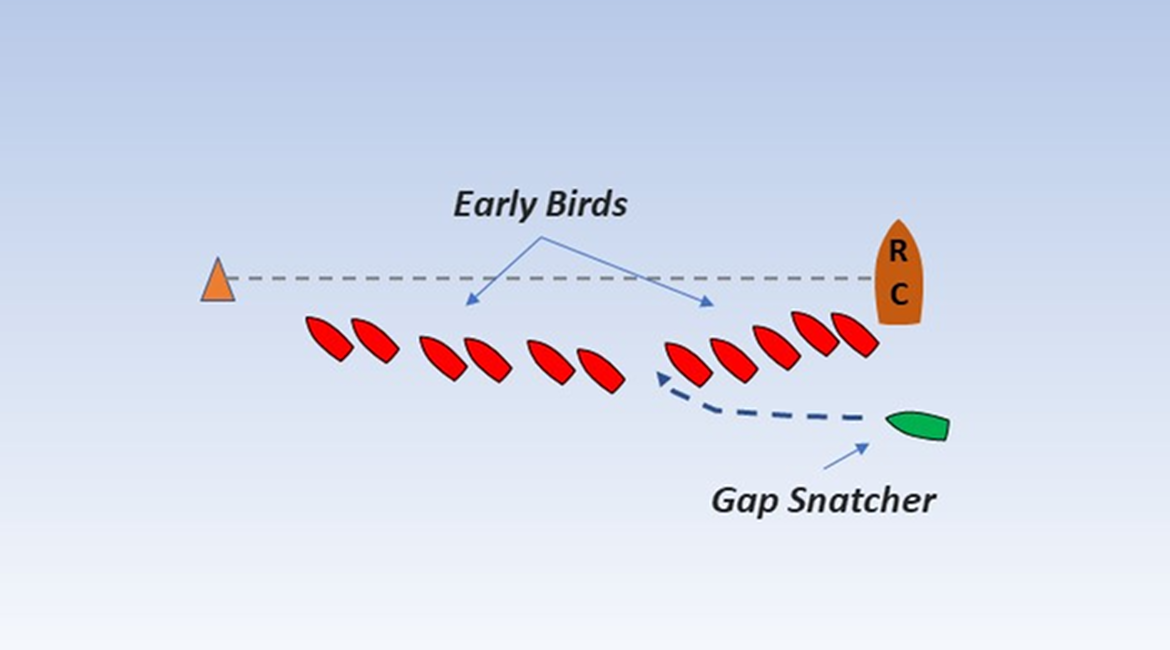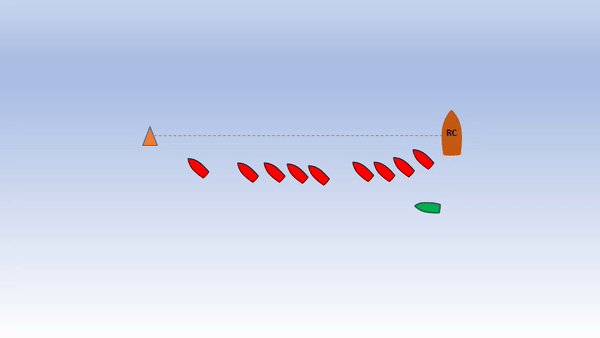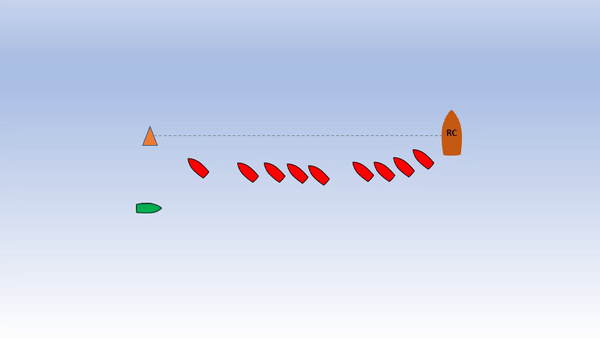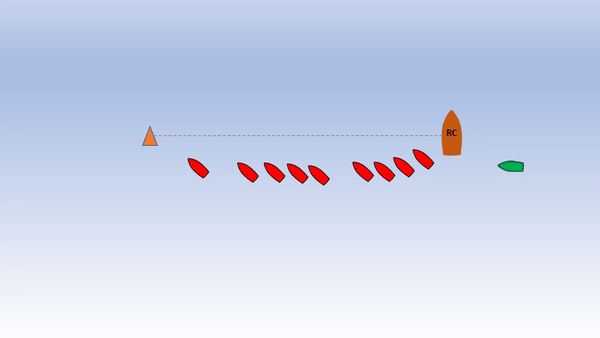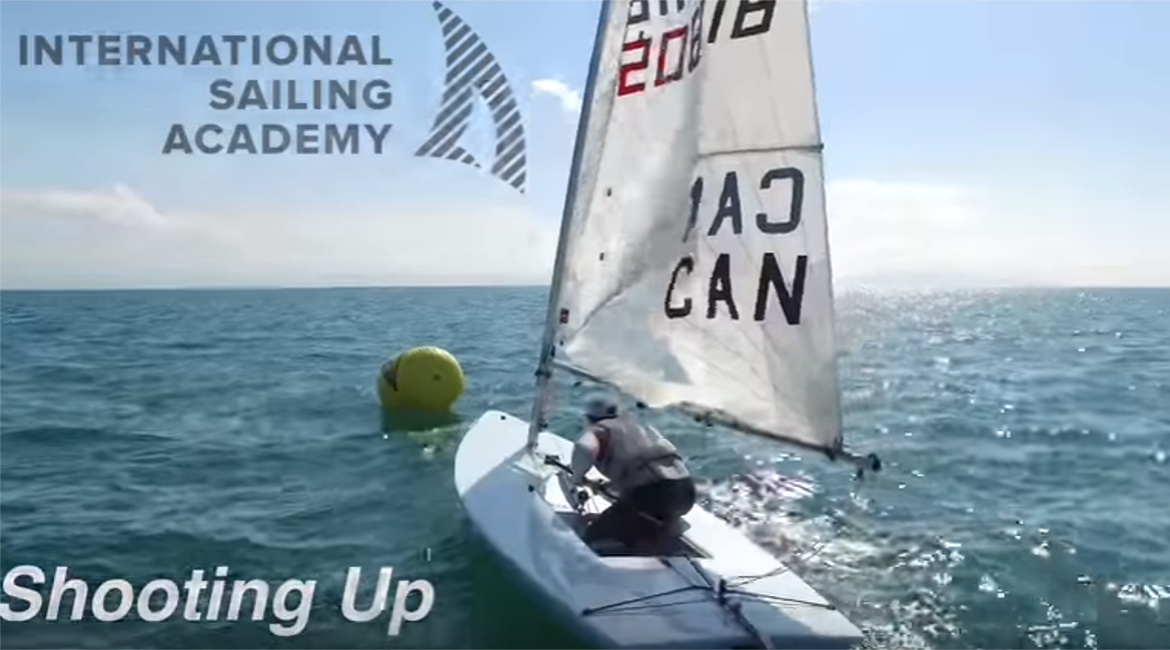Get into the habit of using the same starting approach every time. Greg Fisher, College of Charleston Head Coach and multiple class champion
Develop a Routine Starting Line Approach
To improve your starts, many experts suggest you use the same starting line approach every time. If you develop an approach and practice it, you will get better.
First, you have to decide what kind of “creature” you want to be.
- Early Bird. The early bird decides where to start and stakes his claim before others, perhaps as early as 1:30 before the start.
OR
- Gap Snatcher. The gap snatcher picks a general starting location, but waits until less than 0:45 to find an early bird’s gap and steal it.
Early Bird
Early birds value the ability to choose a specific starting location and ensure a front row position. They get to their starting location with at least 1:00 remaining (or even 1:30) and slowly approach the line, luffing on starboard tack. Because they are early, their biggest concerns are:
- Holding position, retaining steerage, and leaving enough distance to accelerate
- Defending against gap snatchers
- Ability to escape if their gap disappears or the wind shifts
Successful early birds practice holding position and defending their gap. Their biggest worry is lack of flexibility. By being early, they can lose their gap, or get locked into a starting location, with boats on either side, and no ability to change spots if the wind shifts.
Gap Snatcher
Gap snatchers like to obtain their gap late in the game, when the chances of becoming a victim are reduced. They also value the ability to change locations if the wind shifts late in the sequence. They typically work their way into a gap in the front row with 0:45 remaining (or less). Because they are late and maneuvering at the last minute, their biggest concerns are:
- Getting shut out, if the density of boats near their chosen location is too high
- Lack of ability to maneuver around other gap snatchers
- Coming in with too much or too little speed
- Not giving the victim room to keep clear as they swoop in tight to leeward
Gap snatchers come in at least three varieties, based on how they troll for gaps.
Starboard Drifter
Starboard drifters sail slowly behind the front row, find their gap and swoop in to leeward around the victim’s transom. The drifters’ concerns are:
- Getting blocked by starboard drifters to leeward
- Speed control: too much if they bear off to maneuver, or too little in bad air
- Inability to see gaps until they are too close to slow down
Port Explorer
Port explorers sail toward the RC boat, a few boat lengths behind the front row. Sailing on port gives them a better view of gaps and better speed control. When they find a gap they tack into the windward side of it, using their turn speed and tacking angle to match the victim’s speed. The explorers’ concerns are:
- Maneuvering around starboard drifters. Tell starboard tackers to hold their course.
- Inability to tack: other port explorers overlapped to windward or close behind
- Tacking too late and letting another explorer take your gap
Lurker (Starboard or Port)
Lurkers stay outside of the starting box, anticipating an opportunity for a last minute approach at either end of the line. With a highly favored port end, the port lurker anticipates port-tacking the fleet or if unsuccessful, ducking starboard boats until he can burst out on port. With a highly favored starboard end, the starboard lurker anticipates a gap opening up, or at least, the ability to come in a few seconds late at the RC boat and tack to port for clear air or strategy. Lurking is a high risk approach with two major concerns:
- Fouling other boats (port-starboard, windward-leeward)
- Anticipated gaps do not open up – too long to get clear air
Notable Starting Creatures
From what I can tell, the following notable sailors have declared themselves. The variety indicates that any approach can be successful if you develop your skills.
- Dave Perry – Starboard Lurker. In Winning in One Designs, Chapter 12, Dave touts the advantages of starting at the RC boat, and “lurking in the shadows” to do so.
- Greg Fisher – Port Explorer. In an online video, at 11:35, a young Greg emphasizes the advantages of the port approach and late tack into a gap.
- Buddy Melges – Port Explorer. In Sailing Smart, Chapter 6, Buddy discusses using a port approach to start at either the pin or the RC boat.
- Peter Isler – Starboard Drifter. In this online video, at 47:30, Peter declares himself as a starboard approacher.
Related Content:
Starting Strategy and Tactics: Where to Start
NS14 Racing Tip 01 – Basics of Starting – at 6:50, Peter Vaiciurgis tells us to stay in the box
Starting: Shooting Up to Maintain Your Gap
Sailors Helping Sailors
Will you share your knowledge with your related Comments below?

